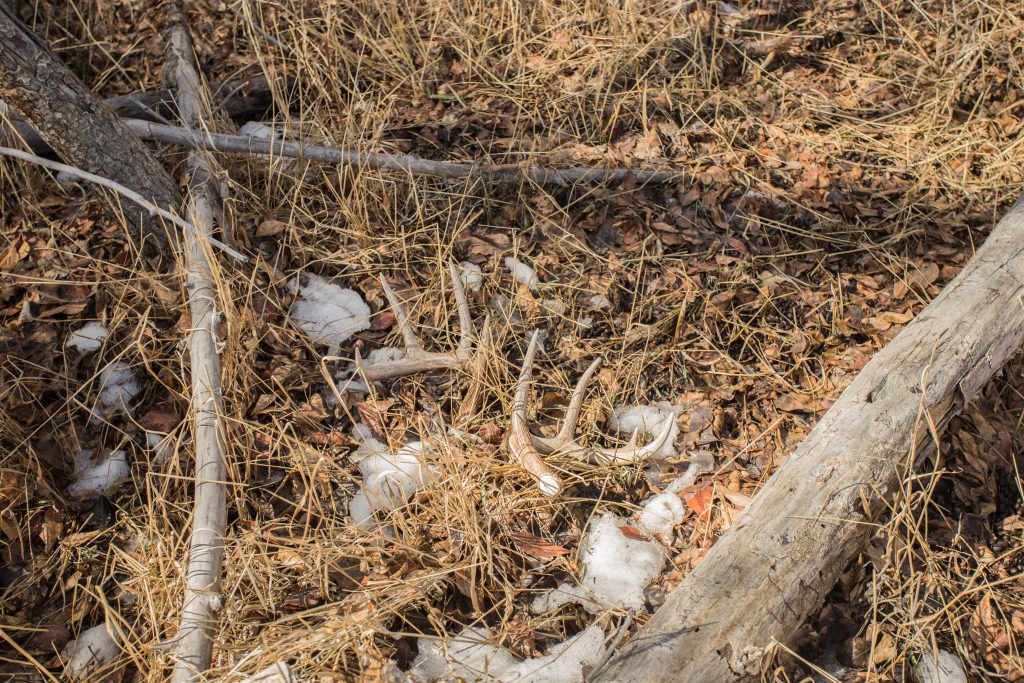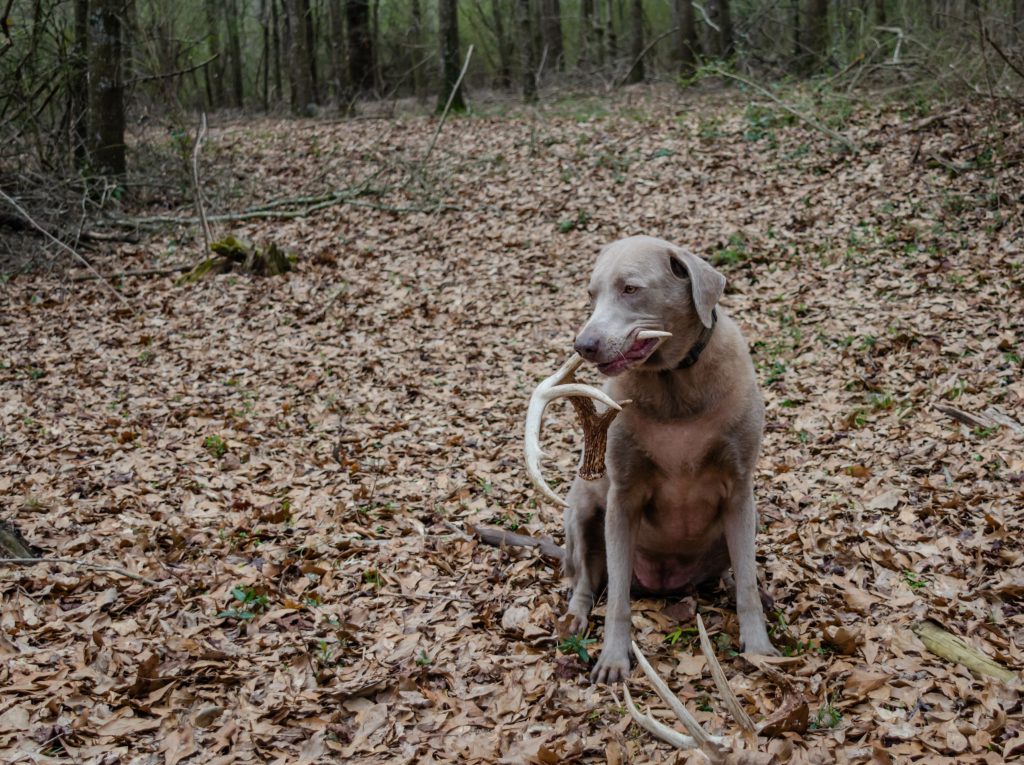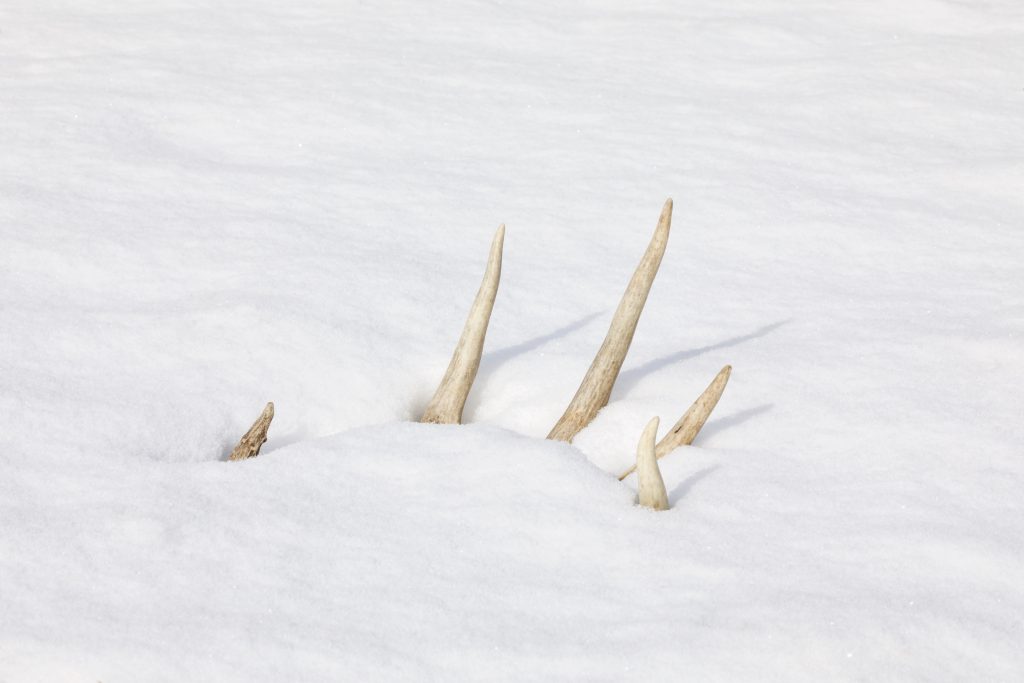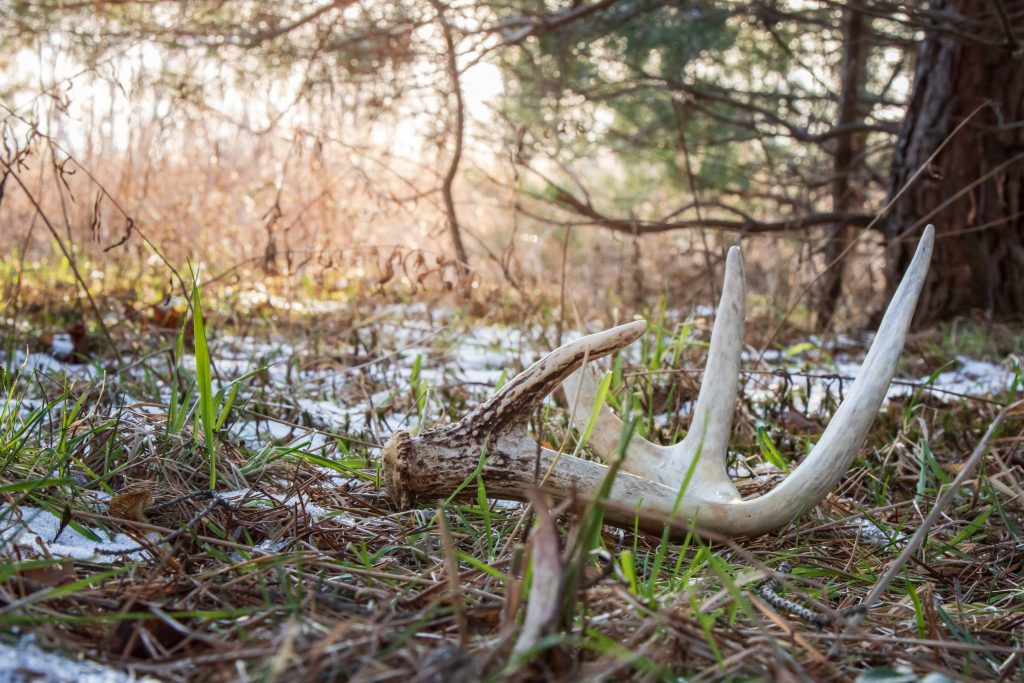The Art of Shed Hunting: Tips and Tricks for Finding Deer Sheds
by Elevation Equipped on January 18, 2023
Shed Hunting 101: The Basics
What is shed hunting?
Simply put, shed hunting is the pursuit of searching for and keeping naturally shed antlers from antler-bearing mammals such as deer, elk, and moose.
When Do Deer Shed Their Antlers?
There are various factors that contribute to when a deer will shed their antlers. However, generally speaking, deer typically shed their antlers anywhere from late December to early March each year.
Why Do Deer Shed Their Antlers?
The main two factors that cause deer to shed their antlers are declining levels of testosterone and shorter daylight. Other factors that contribute to the shedding process include injuries, diet, and nutrition.
Is Shed Hunting Legal?
Shed hunting is legal in most states. However, each state’s wildlife agency has its own specific rules, regulations, and restrictions in regard to shed hunting.
For example, most wildlife agencies outlaw taking a dead head, or an animal skull with the antlers still attached.
Other states also have rules and regulations against antler traps that aid in the harvesting of deer antler sheds.
As with all things hunting, make sure you refer to your state’s wildlife agency rules and regulations in regard to the legality of shed hunting in your state.
Top 3 Shed Hunting Tips
Shed hunting is a popular pastime among hunters because it allows them to enjoy the outdoors while still actively scouting hunting areas in the winter months.
It’s a great way for amateur or veteran shed hunters alike to hone their skills and enjoy some quality time in nature.
But, how exactly do you go about finding those elusive antler sheds?
We’ve listed our top 3 shed hunting tips to help you find success in the field this winter and spring.
1. Understand Your Prey
The first key step to successful shed hunting is understanding the animal whose sheds you’re after.
Get to know the deer population in your area—where they typically bed down, food and water sources, travel patterns, and any other pertinent information.
Knowing this information can help you narrow down where to look.
The good news is if you’re shed hunting when you typically hunt – you should already have a majority of this intel already gathered.
Rely on the information you gathered this past spring and summer during scouting sessions, as well as the hours you spent in the woods hunting this past fall.

2. Stay Alert in the Field
When shed hunting, the element of surprise is key.
Pay attention to your surroundings and keep an eye out for anything unusual—like antlers nestled away in a bush or stuck between two rocks.
Slowly and intentionally scanning the forest floor as you hike through the woods will definitely increase your odds of finding sheds.
Expert shed hunters also know where to look.
If you can find spots where deer may have exaggerated movements e.g. getting up and down from bedding areas, moving through thick cover, as well as jumping over obstacles.
Pay extra attention to creek bottoms, embankments, fence rows, or fallen trees across game trails – there’s an increased chance of finding sheds in these locations.
3. Bring A Friend
Shed hunting can be more fun (and safer!) with a friend along for the ride.
Bring someone with you who knows the area well so that together, you can cover more ground than if you went alone.
Plus, having someone there means that when one person finds an antler, chances are they will be able to spot another one nearby too.
You can even try setting up a friendly competition—whoever finds the biggest or the most sheds wins!
If a friend isn’t able to join you – consider taking man’s best friend; your dog.
Certain dog breeds can be trained to help you find sheds.

Bonus Tip: Use Weather to Your Advantage
Veteran shed hunters will tell you that they love taking advantage of the weather.
What does that mean? Well, just like with hunting deer, it’s easier to find sheds when there’s better contrast and you can spot them easier.
The most ideal time is when there’s a dusting of snow on the ground.
The second best time is after recent rain.
The wet leaves tend to be dark and provide great contrast for a deer antler to be spotted laying on the ground.

Go Shed Hunting
Shed hunting can be both exciting and rewarding if approached properly.
Understanding animal patterns and habits will help you know where exactly to look.
After determining where to look, staying alert while in the field will make all the difference in finding those hidden gems.
And don’t forget that having someone join in on the adventure makes it even better; it’s always more fun trying new things with friends.
With these tips and tricks up your sleeve, now all that’s left is lacing up those hiking boots and getting out there!
For more archery and hunting-related content, be sure to check out our other blog posts at Elevation’s blog here.
Finally, make sure to connect with us on Facebook, Instagram, and YouTube for new product news, releases, promotions, and product giveaways!
Posted in Blog

